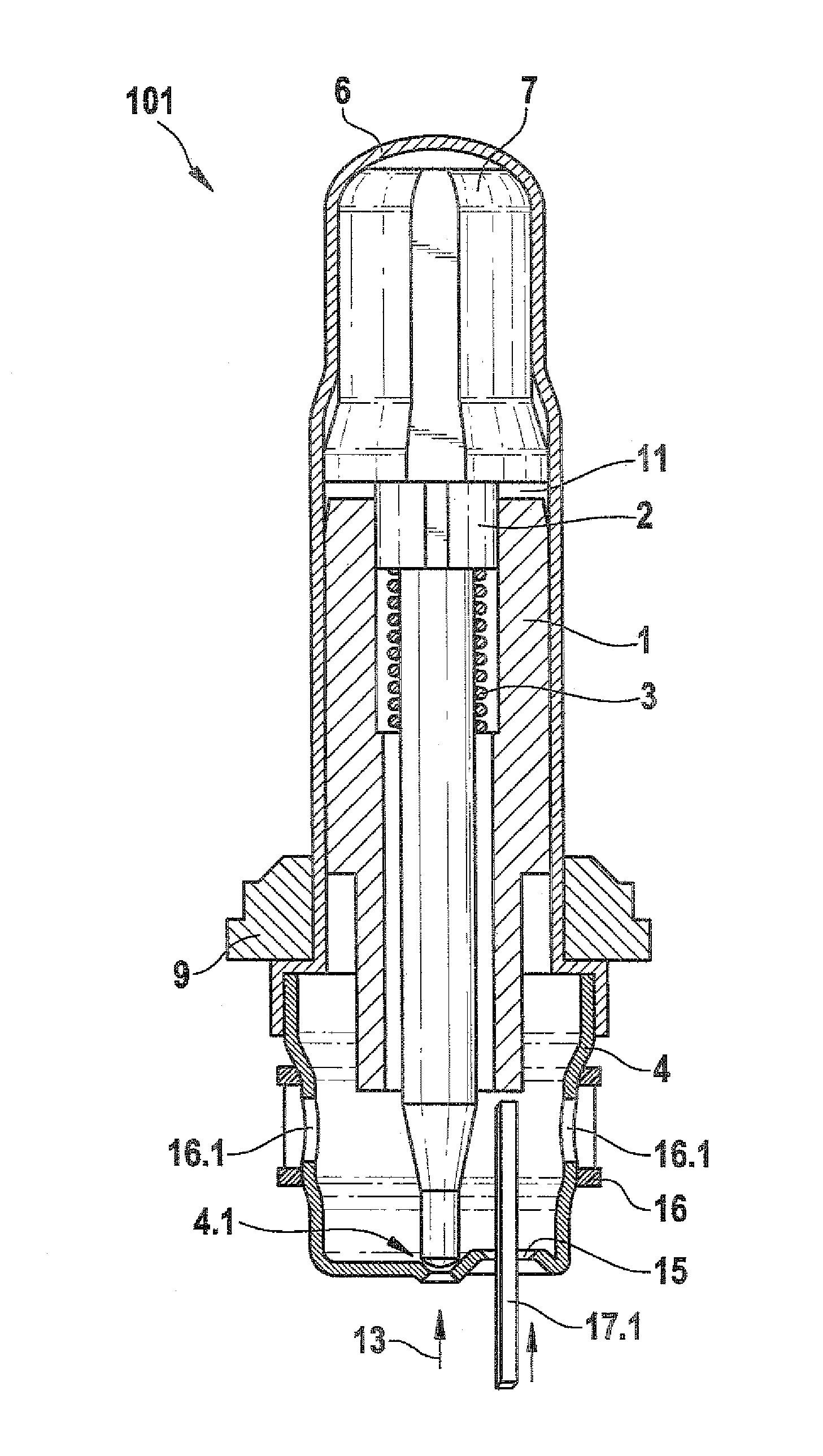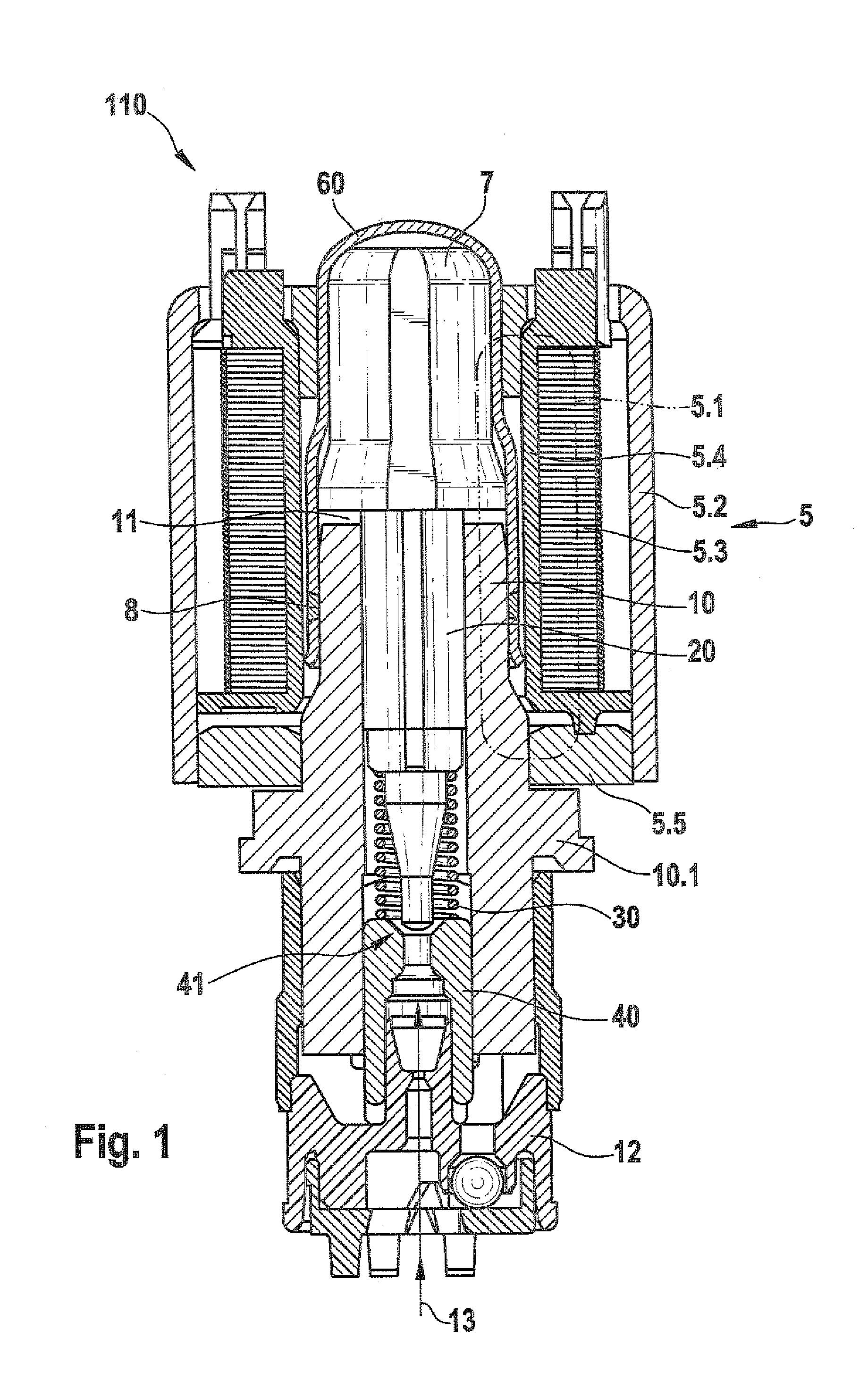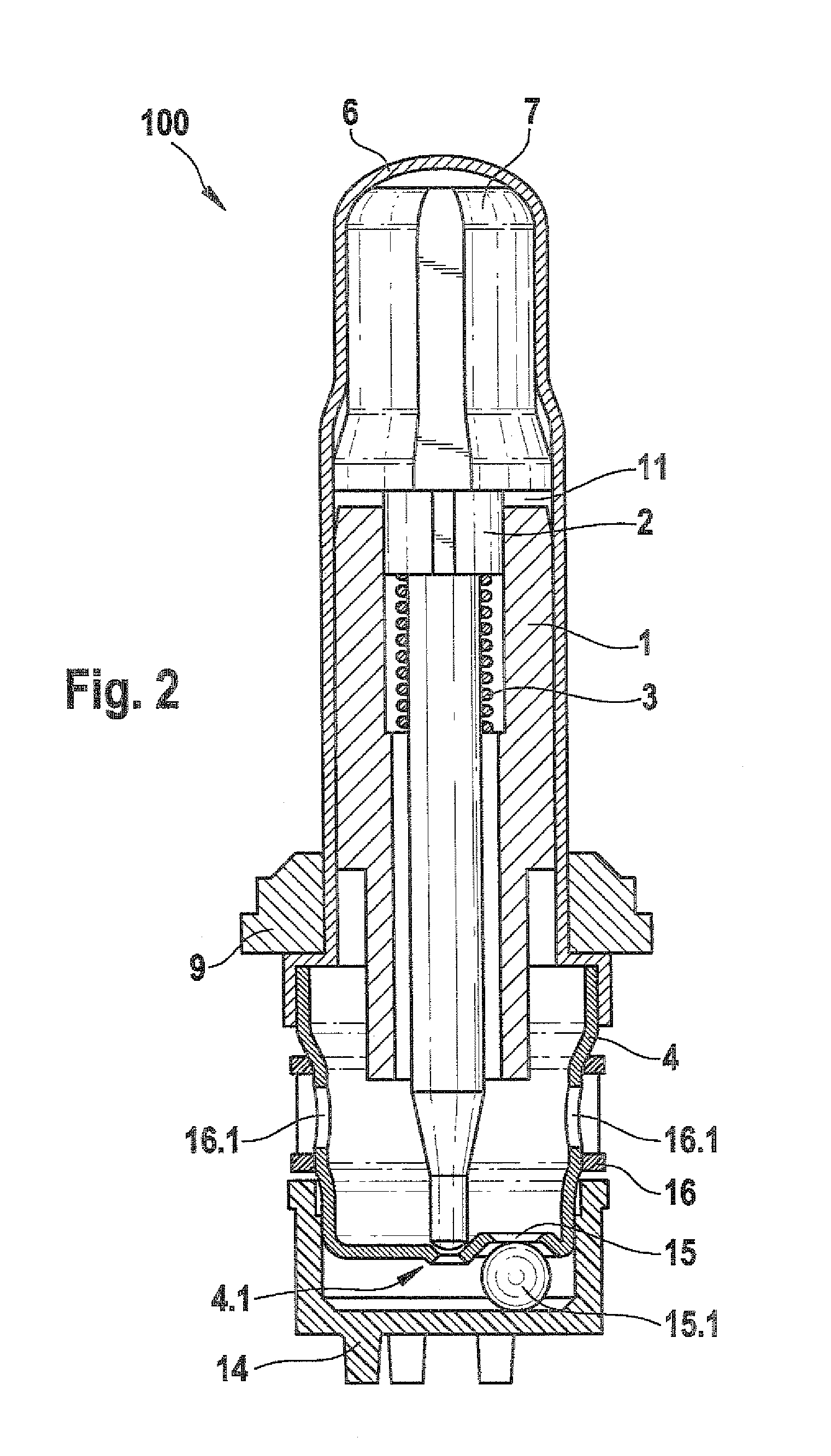Magnetic valve
a magnetic valve and valve body technology, applied in the field of magnetic valves, can solve the problems of difficult calibration of the magnetic valve, limit the further development of the integration of parts in the optimizing valve assembly, etc., and achieve the effect of reducing the magnetic flux, increasing the magnetic flux, and being easy to calibrate and adjus
- Summary
- Abstract
- Description
- Claims
- Application Information
AI Technical Summary
Benefits of technology
Problems solved by technology
Method used
Image
Examples
Embodiment Construction
[0020]As can be seen from FIG. 2, a valve cartridge 100 for a magnetic valve according to the invention, which valve cartridge is wedged via a valve bush 9 in a wedging region, not shown, with a fluid block, includes a capsule 6, a sleeve 4, a valve insert 1, a tappet 2 guided in an inner bore of the valve insert 1, a restoring spring 3 which is braced against the valve insert 1 in the inner bore and restores the tappet 2, and an armature 7. The capsule 6 is pushed in overlapping fashion onto the valve insert 1 and is embodied as a valve component that provides sealing from the atmosphere. In a distinction from the conventional magnetic valve 110 shown in FIG. 1, the capsule 6 is lengthened in the direction of the wedging region. As a result, the conventional sealing weld 8 of FIG. 1 can be omitted. Furthermore, the fluid forces and wedging forces are no longer absorbed by the valve insert 1 but rather by the valve bush 9 and are transmitted to the fluid block via the wedging region...
PUM
 Login to View More
Login to View More Abstract
Description
Claims
Application Information
 Login to View More
Login to View More - R&D
- Intellectual Property
- Life Sciences
- Materials
- Tech Scout
- Unparalleled Data Quality
- Higher Quality Content
- 60% Fewer Hallucinations
Browse by: Latest US Patents, China's latest patents, Technical Efficacy Thesaurus, Application Domain, Technology Topic, Popular Technical Reports.
© 2025 PatSnap. All rights reserved.Legal|Privacy policy|Modern Slavery Act Transparency Statement|Sitemap|About US| Contact US: help@patsnap.com



